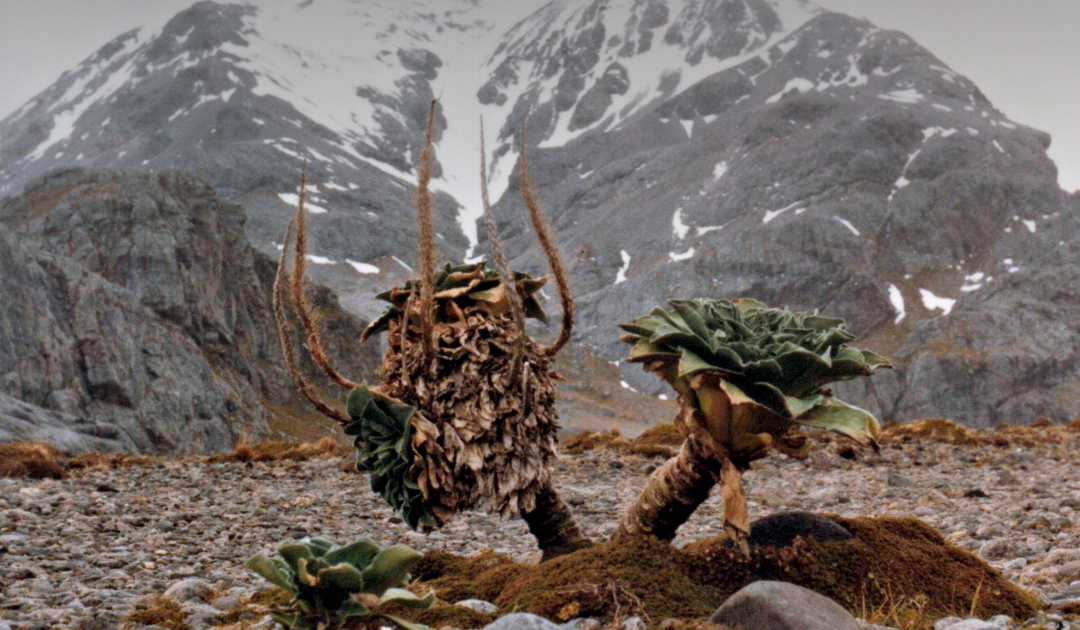
When you think of Antarctica, you think of penguins, icebergs and the cold. Hardly a place where you would think of flowers or grasses. But on the one hand, this was not always the case, and Antarctica was still a pretty green place in the time of the dinosaurs. And even today, subantarctic islands with a lot of green surprise the eye of the visitor. The Botanical Garden of the University of Berne has now taken up the theme and created a very special place.
Gondwana was the dominant supercontinent in the southern hemisphere between 180 and about 38 million years, formed by the present continents of South America, Africa, Australia, India, and Antarctica. Witnesses to this are present as fossil remains, including those of plants, on the continents that are now separated by thousands of kilometers. And from the remains of this ancient plant world grew a new diversity on the different continents, which is now displayed for the public in the “Gondwana House” of the Botanical Garden BOGA of the University of Berne. “With the Gondwana House, we enable visitors to experience first-hand some of the world’s particularly biodiverse regions on their own doorstep,” says Markus Fischer, BOGA’s director. The house is now the Botanical Garden’s seventh show house and opened last Friday.

Over 200 different species now have a home in the “Gondwana House”. About two years of remodeling were necessary to design the house to provide ideal conditions for the species with their reversed flowering and growing seasons. It is true that the garden had previously displayed plants from the southern hemisphere. But every year they had to be protected from the winter conditions of the northern hemisphere, and thus each time moved to a greenhouse. However, this meant a great deal of stress for the plants and a human and material effort that should not be underestimated. The “Gondwana House” now reduces the effort and provides a year-round place for plant species to thrive. For the BOGA staff like Adrian Möhl and Silvan Glauser, who take care of the plants, this is a joyful moment. “With the Gondwana House, these plants are finally getting the space they deserve,” explains Silvan Glauser.

The flora displayed in the “Gondwana House” is divided by biogeographical regions and is currently dominated by the so-called Cape flora, i.e. the flora of southern Africa. But also species from other regions like South America and Australia/New Zealand are grown and exhibited in the “Gondwana House”. Another biogeographic region is particularly surprising, that of Antarctica. This region includes not only the continent of Antarctica, which is almost entirely covered with ice, but also hosts some 200 species of lichens, more than 50 species of mosses, and more than 700 species of algae, plus two higher flowering plants. Also included are all the subantarctic islands that lie in the oceans around Antarctica. And these show a surprisingly great variety, some of which is unique to each island. “Here, too, we find heirs from the former southern continent and it is fascinating to observe the similarities and differences in the respective floras,” says Adrian Möhl, staff member at BOGA and initiator of the “Gondwana House.”
He would like to see this region represented even more in the “Gondwana House” and that is why they are in the process of obtaining other species. His favorites are the Kerguelen cabbage, native only to a few islands between South Africa and Australia, and which had played an important role in maritime navigation in the Southern Ocean. Because it is very rich in vitamin C and so helped against scurvy, as shown by its scientific name Pringlea antiscorbutica. Today, however, it is threatened by introduced animal and plant species and also by overexploitation at most sites and is correspondingly difficult to obtain.

Getting plants like the Kerguelen cabbage is not so easy. This is because most species are protected and numerous administrative and also logistical hurdles have to be overcome in order to ultimately obtain a species from the Antarctic region, says Adrian Möhl. And once it’s there, the conditions must also be met for it to thrive successfully. This is because species that grow in the Antarctic region are hardy, but need these conditions to be able to be raised in other places. This also applies to another desirable candidate of the “Gondwana House”: Deschampsia antarctica or Antarctic hairgrass. This grass is one of only two flowering plant species that have actually made it to the edges of Antarctica, but are also difficult to obtain because they are considered “protected” under the Antarctic Treaty. But as a German saying goes, “Only the tough ones make it to the garden (meaning: When the going gets tough).” And the living conditions of Deschampsia certainly belong to the toughest.
Article image: courtesy of BOGA, photographer: Adrian Möhl
Dr Michael Wenger, PolarJournal
The botanical is open daily from October – April from 08:00 – 21:00 and from November – March from 08: – 17:00. More information can be found at this link.
More on the topic





